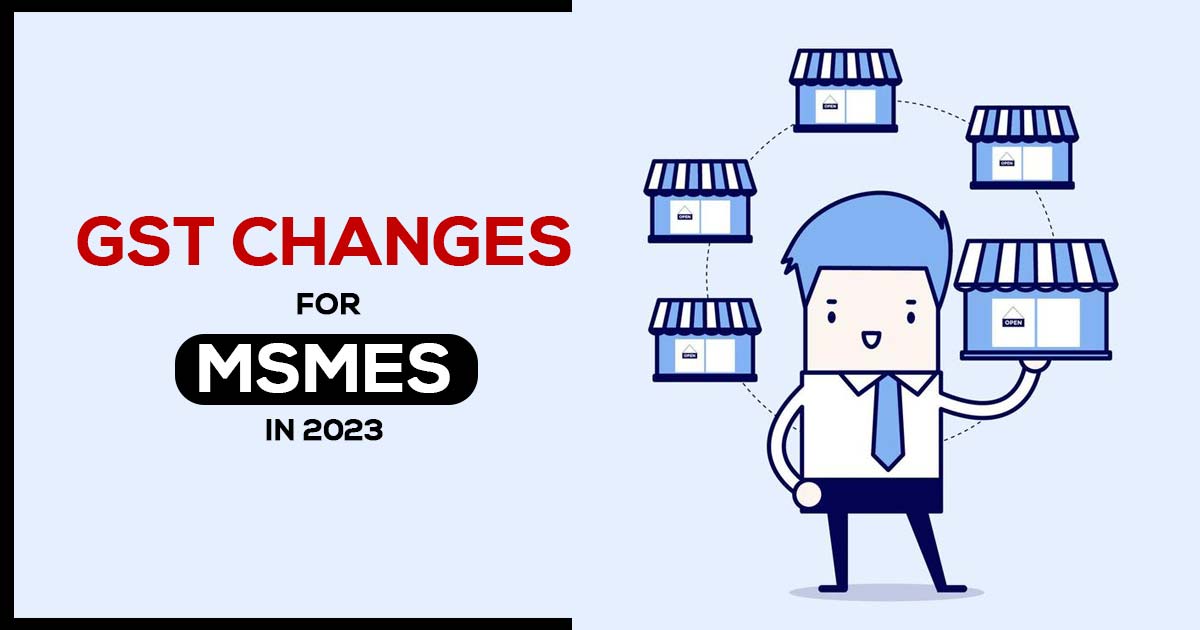
As small businesses look ahead to further Goods and Services Tax (GST) reforms in the upcoming year, several crucial GST-related changes impacted MSMEs in 2023. Let’s take a swift look back at the significant events of the past year for these resilient small businesses that have navigated through regulatory shifts with determination.
Validate the Units of Non-GST Framework
Over 100 million informal micro units (IMEs), not under the purview of the GST regime or exempted from the CGST Act, 2017, have enrolled for the Udyam certificate through the government’s Udyam Assist Platform (UAP) to access priority sector loans (PSL). As per the latest data from the Udyam portal, the count of Udyam-registered IMEs stands at 1.10 crore. Launched in January this year, the UAP supports the Udyam portal’s efforts to formalize such entities within the economic framework.
Introduces Index for MSME Economic Activity
On Friday, Jocata a financial advisory and tech firm, revealed its collaboration with SIDBI, the primary financial institution for MSME growth. Together, they introduced Sumpoorn, an MSME Economic Activity Index. This index, derived from consent-driven and anonymized monthly sales data sourced from over 50,000 MSMEs seeking financial credit from October 2019 to the present, differs from conventional survey-based indices. Sumpoorn stands out as a relative amplitude-adjusted composite diffusion index, using official GSTN returns to gauge economic activity.
Recovery in MSMEs’ Sector After Covid Situation
The Economic Survey of 2022-23, released in January, highlighted a significant recovery in GST payments by MSMEs. Despite a decline in FY21, these payments surpassed pre-pandemic levels of FY20. This rebound showcased the financial resilience of small businesses and underscored the efficacy of targeted government interventions.
The survey data revealed a drop in GST payments from Rs 5 lakh crore in FY20 to approximately Rs 4.7 lakh crore in FY21, followed by an ascent to around Rs 5.5 lakh crore in FY22. The survey emphasized that the trajectory of GST payments by MSMEs reflects the sector’s remarkable recovery from the pandemic-induced setback.
Unregistered GST E-commerce Sellers Access to Intra-state Supply
Starting October 1, 2023, e-commerce vendors dealing in goods up to Rs 40 lakh and services up to Rs 20 lakh, yet unregistered under the Central Goods and Services Tax (CGST) Act, are permitted to engage in intra-state supply.
In a bid to support micro-enterprises in e-commerce, the GST Council, during its 47th meeting in June of the previous year, granted preliminary approval for unregistered suppliers and composition taxpayers to conduct intra-state supply of goods through ECOs (Electronic Commerce Operators) like Amazon, Flipkart, among others, with specific conditions to be met.
Lowers the T.O. Threshold Limits for GST E-invoicing
In May, the Central Board of Indirect Taxes and Customs (CBIC) within the finance ministry announced a reduction in the turnover threshold for e-invoicing. As per the notification, businesses with a turnover exceeding Rs 5 crore, down from the previous Rs 10 crore, in any financial year must generate GST E-invoices for their business-to-business (B2B) dealings, including supply of goods, services, and exports, starting August 1, 2023.
This adjustment in the turnover threshold by CBIC will encompass more small enterprises with turnovers between Rs 5 crore and Rs 10 crore. Presently, micro-enterprises (with turnovers less than Rs 5 crore under the new MSME definition) remain exempt from the e-invoicing mandate.